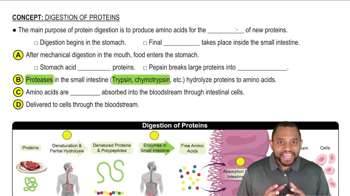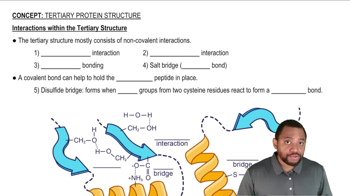Classify each amino acid as polar, nonpolar, acidic, or basic.
a) Glu
b) Val
c) Pro
d) Lys
e) Gln
f) Arg
 Verified step by step guidance
Verified step by step guidance Verified video answer for a similar problem:
Verified video answer for a similar problem:



 5:16m
5:16mMaster Nonpolar Amino Acids Concept 1 with a bite sized video explanation from Jules
Start learning